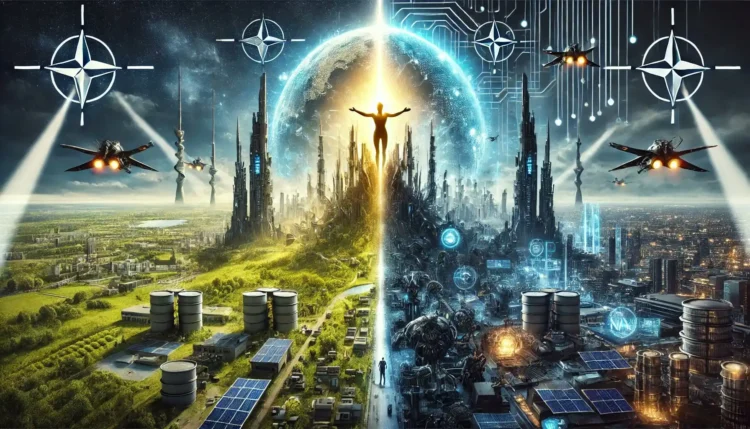Industry 4.0 Technologies
Why It Matters for Freedom vs. Domination
Why Canada’s Under-investment Hurts Everyone
A Stark Choice

Related Content:
Title: “The Ghost in the Machine and the Spectre of Dystopia: Comparing Transhumanist Visions in Eastern and Western Science Fiction” https://skillsgaptrainer.com/ghost-in-the-machine-spectre-of-dystopia/
Title: “Navigating the Dystopian Singularity: Shaping TNG-Inspired Future Amidst Colliding Dystopias” https://skillsgaptrainer.com/navigating-the-dystopian-singularity/
Title: “Fortifying the Future: Enhancing Canada’s Naval Capabilities in an Era of Advanced AI Warfare“ https://skillsgaptrainer.com/fortifying-the-future/
Title: “The AI Arms Race: Understanding the US-China Competition in Artificial Intelligence” https://skillsgaptrainer.com/the-ai-arms-race/
Title: “The Great Filter Ahead: Engineering a Pathway to Complex Civilizational Survival and Overcoming Cosmic Hurdles” https://skillsgaptrainer.com/the-great-filter-ahead-engineering-a-pathway/
Title: “The Environmental Impact of Canadian Immigration: A Hidden Contributor to Climate Change” https://skillsgaptrainer.com/environmental-impact-of-canadian-immigration/
SGT Military Page: https://skillsgaptrainer.com/category/military-science/
SGT Communications Page:https://skillsgaptrainer.com/category/communications/
To see our Donate Page, click https://skillsgaptrainer.com/donate